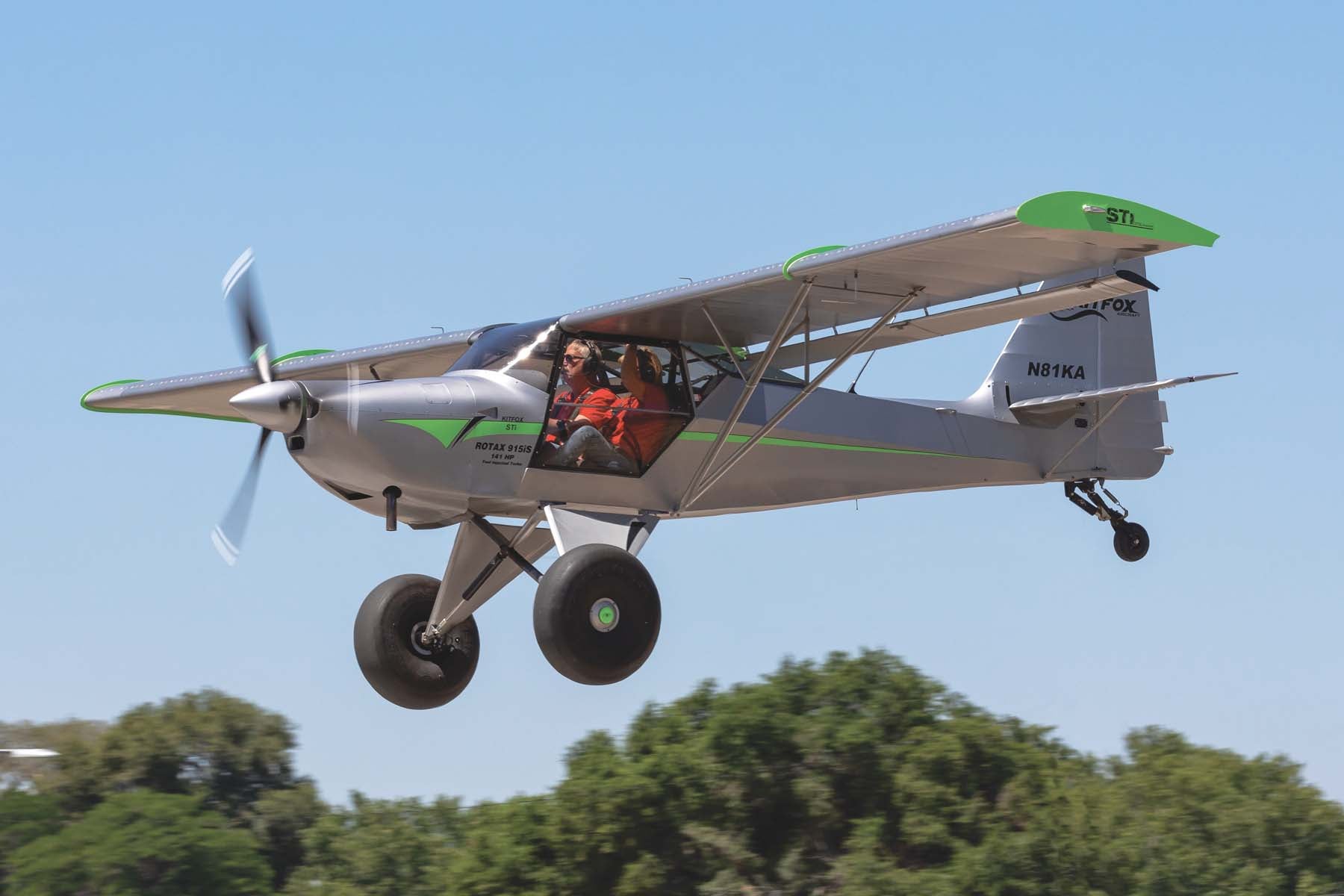
Truth is, 1984 was probably not the most significant year in Experimental aviation. Instead, you could cite 1947, when homebuilts were “legalized” by the FAA. Or you could say 1923 because that’s the year Bernie Pietenpol released his buildable design into the world. Or maybe it’s 1972 (slurring into 1974) with the first flight of the VariViggen that accompanied Burt Rutan’s move from Bede Aircraft to creating the Rutan Aircraft Factory in 1974.
For sure, 1984 marked both our birth as a standalone magazine and also was among the most growth-filled and adventurous parts of homebuilt history. Van’s Aircraft was a mere 11 years old and only the year before Randy Schlitter released the first of his many (many!) RANS designs. Into this came Kitfox, which took the idea of a nostalgic side-by-side two-seater and applied equal parts cute-and-cuddly styling and modern construction. It was an instant and enduring hit, one that builders connected with on many levels but was, perhaps most important, perceived as a kit that an average pilot could hope to complete.
To say that Kitfox has been successful since then is an understatement. Under the ownership of John and Debra McBean (since 2006), the company has developed a line of airplanes you could call “sport-STOL” because they emphasize both short takeoff and landing capabilities but also retain good performance and are fun to fly. Not one-trick ponies, in other words.
John’s philosophy has been clear: Keep the Kitfox true to its roots but bring it along technologically. (See: Rotax 916 iS, full Garmin G3X Touch suite, yaw-damper autopilot!) And produce it locally in Homedale, Idaho, maintaining as much control of the supply chain and manufacturing as is possible in 2024. This approach has caused his order book to outstrip supply by a significant amount—order a new Series 7 today and you can expect it sometime in late 2025.

And They Don’t Care
It’s true, new customers are unfazed by the lead times, if my interaction with them at the recent Kitfox Factory Fly-In is any indication. Some 35 airplanes flew in over the three-day event in June with more than 100 attendees. They were treated to a couple of fly-outs and two days of food and seminars from Rotax, Garmin, PPG Paints and AeroLEDs, plus various demonstrations of techniques needed for building. The schedule seemed like the perfect balance of information, education, recreation and socialization.
I enjoyed watching current Kitfox builders interact with the many who had put deposits down or were just about to. It’s said a successful kit company almost doesn’t need salespeople because the builders do the job for them. I saw this repeatedly over the day I attended. Builders and flyers shared their experience with those about to partake (or still considering) in a very authentic and unfiltered way. I loved hearing veteran builders point out the difficult parts of the project to those behind them in the process. This isn’t a knock on the Kitfox kit. Every single kit airplane has difficult operations—tight working quarters, places that require a bit more skill than others—it’s just the nature of things.
Since I could settle back and basically take it all in, I realized just how much the Kitfox has evolved in recent times. Yes, we’ve covered the Rotax 916 iS installation recently, but I was also interested in the options list the company has filled out, from prefabricated avionics systems that can be “laid into” the airframe in a very short period of time to landing-gear options. While you absolutely can build your Kitfox Series 7 any way you want, it’s clear that there’s demand for a semi-standardized configuration with a Garmin G3X Touch panel with autopilot in front of the pilot and some form of Rotax 900-series engine up front.
Speaking of which, I asked all the about-to-be builders what they’d planned to choose for an engine. Unanimously, it was the 916. Moreover, since Rotax is now strongly encouraging the use of a constant-speed prop with the 916, the effective upgrade is now about $7000 dearer with the addition of an MT constant-speed prop and associated hardware. The builders I talked to didn’t seem too salty about that, recognizing that the added performance, capability and resale value would be worth the investment. That always seems to be the case. I remember when the Glasair Aviation Sportsman debuted the IO-390 package, almost no one chose the previously standard IO-360 configuration.

The Long View
When I think back on how the Kitfox got started, it’s somewhat amazing to see where it is. An airplane that traded on simplicity and nostalgia has grown into a more modern, capable machine that still hasn’t lost its sense of fun.
Recently unearthed in my logbook is a flight of a couple of hours in N190DD, a Kitfox Model 2, way back in 1991 from the company’s (then) base in Nampa, Idaho. If I mentally squint, I can see the bump cowling around the Rotax 582, recall the sound of that two-stroke engine howling away and conjure my mental gymnastics trying to adapt to the tiny Kitfox. I had, after all, flown a Cessna T210 to Nampa from Southern California and had just spent time in a Glasair III a few weeks before. Of those three airplanes, only two leave lasting impressions: the Glasair III and the Kitfox. Funny how that works.













